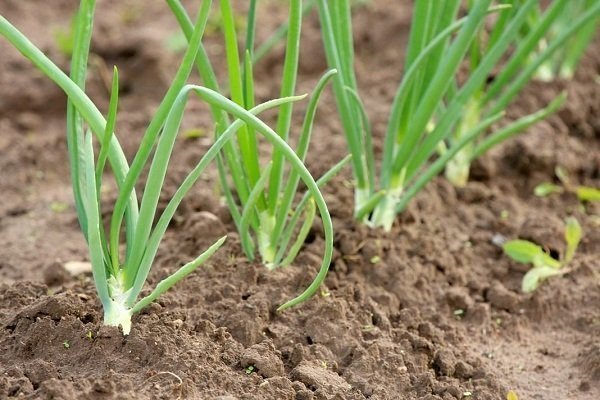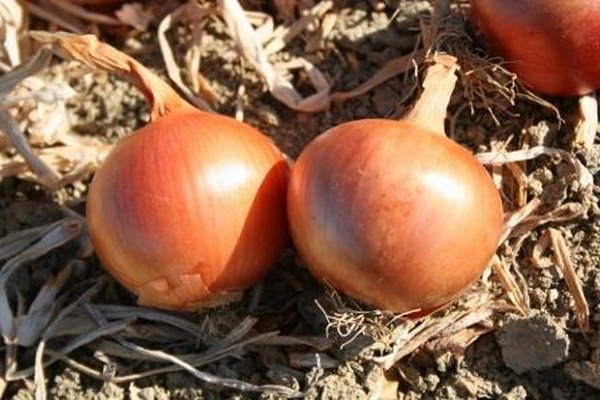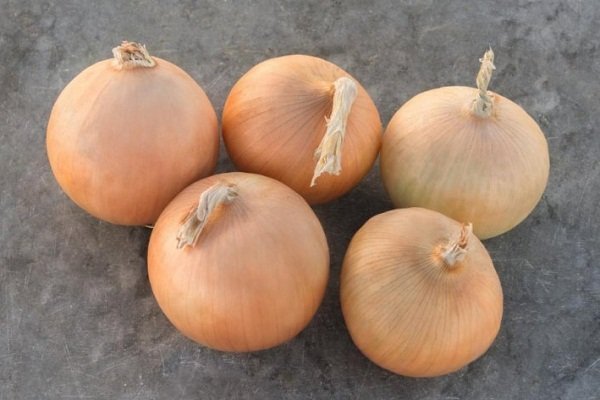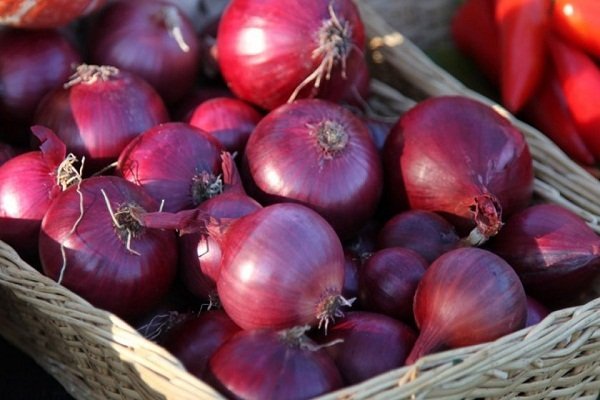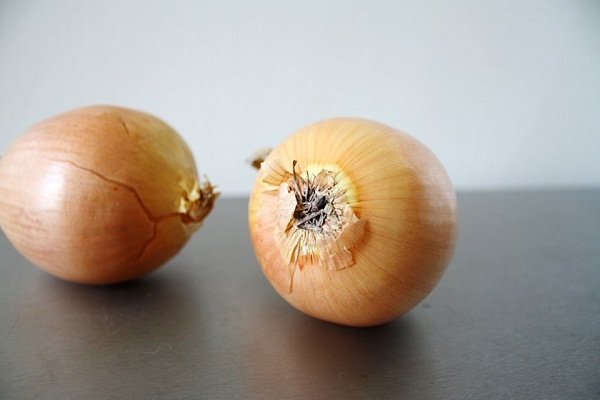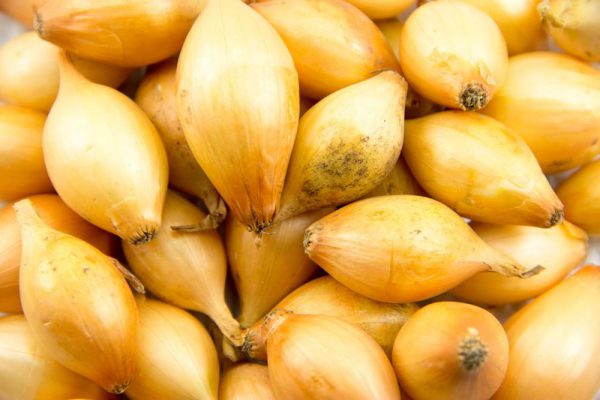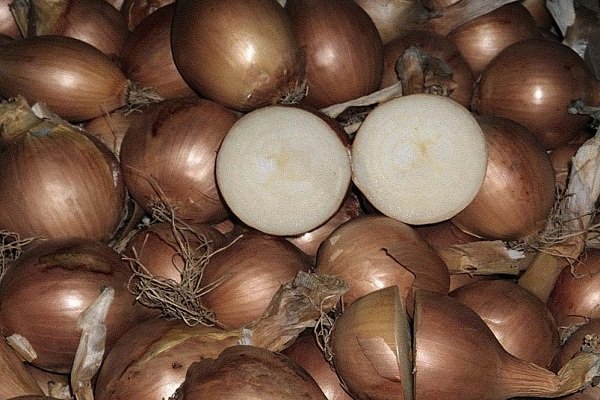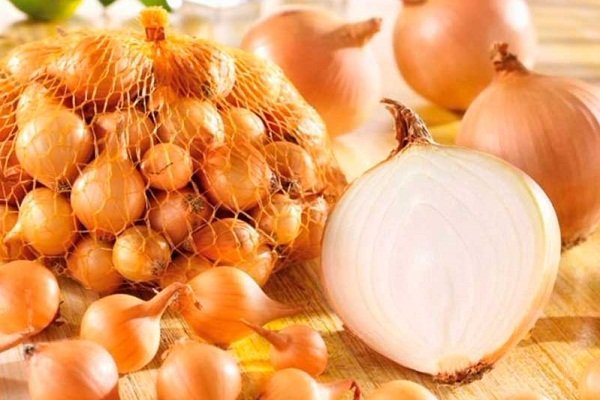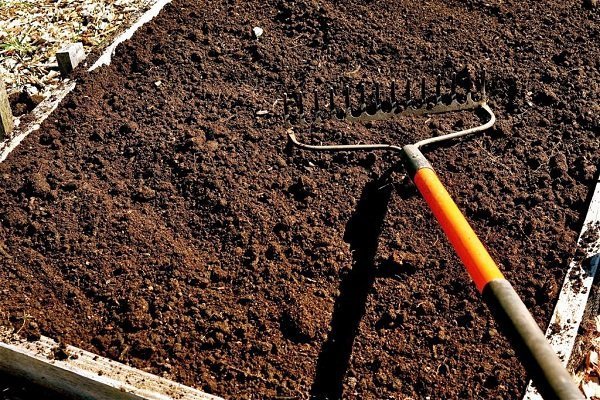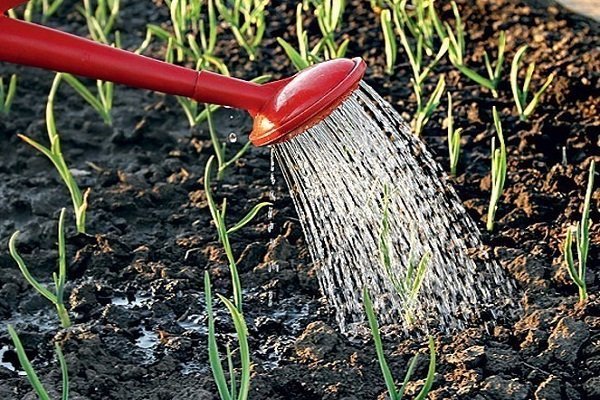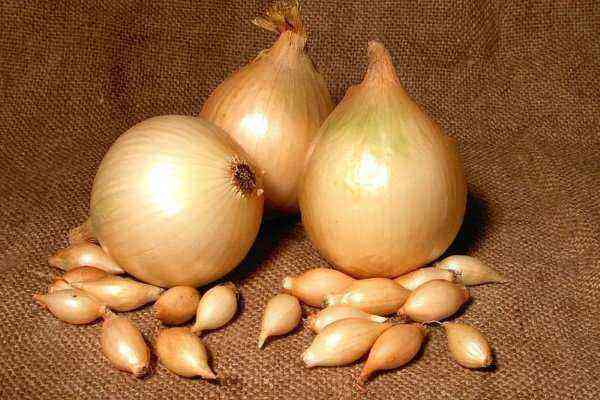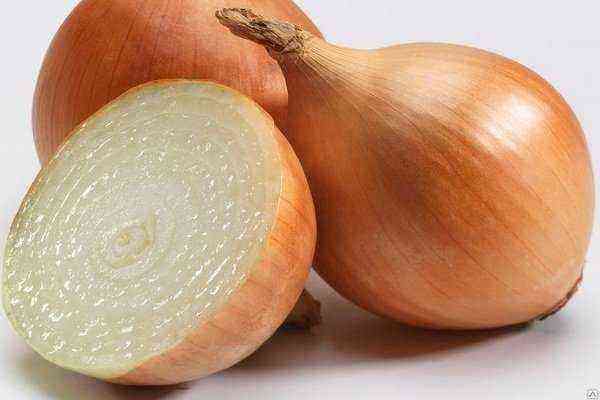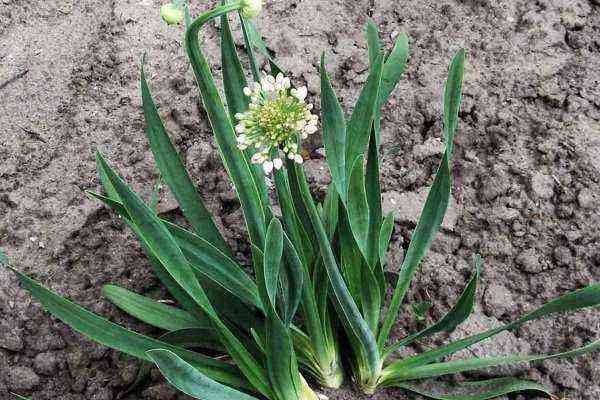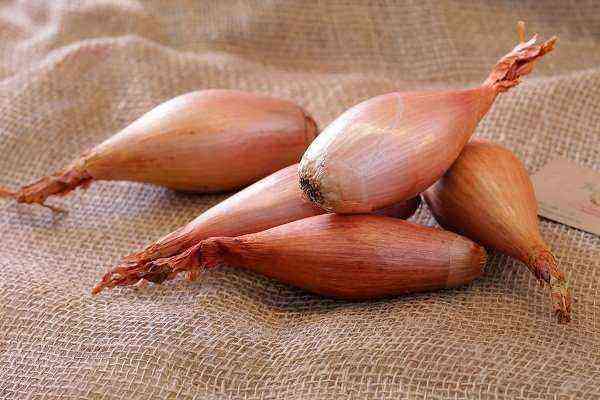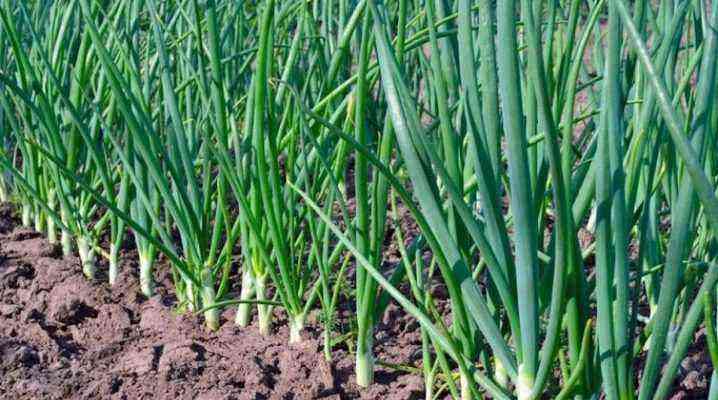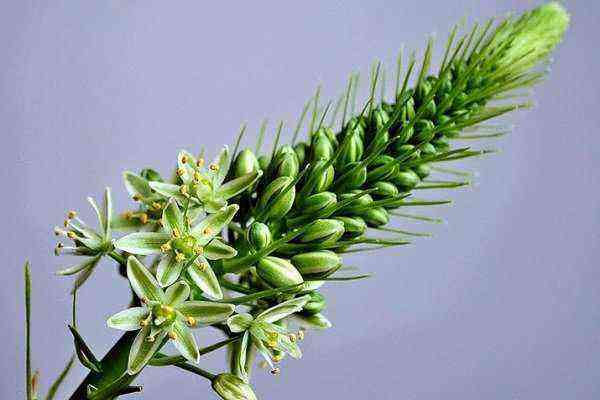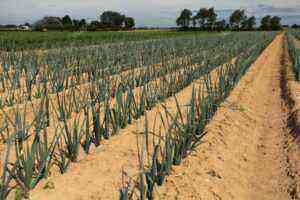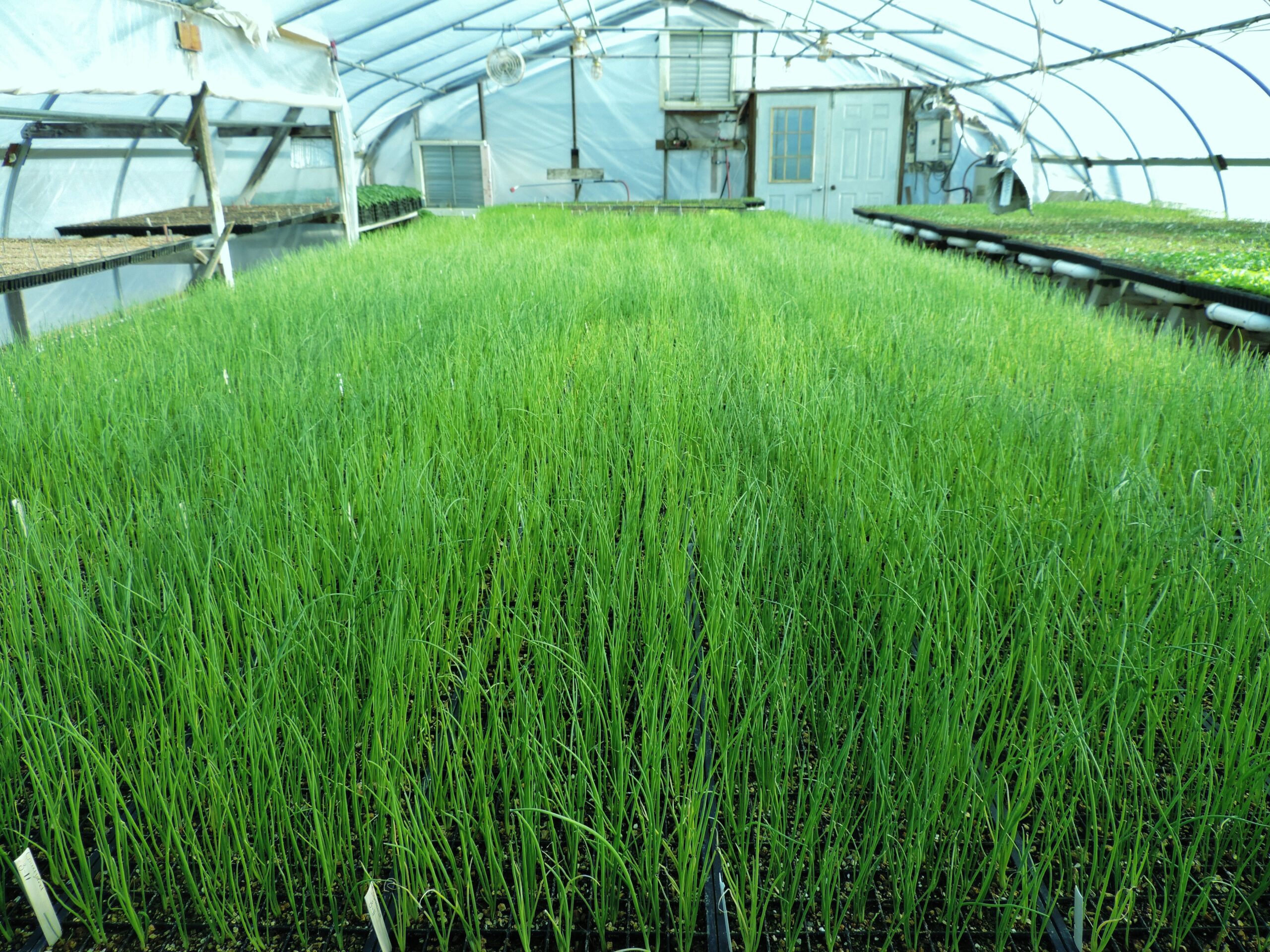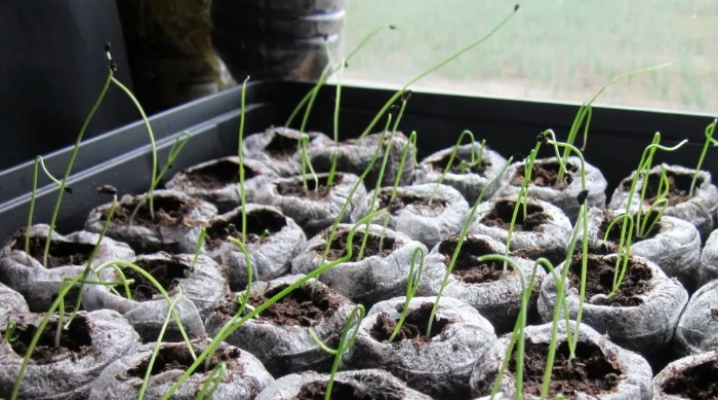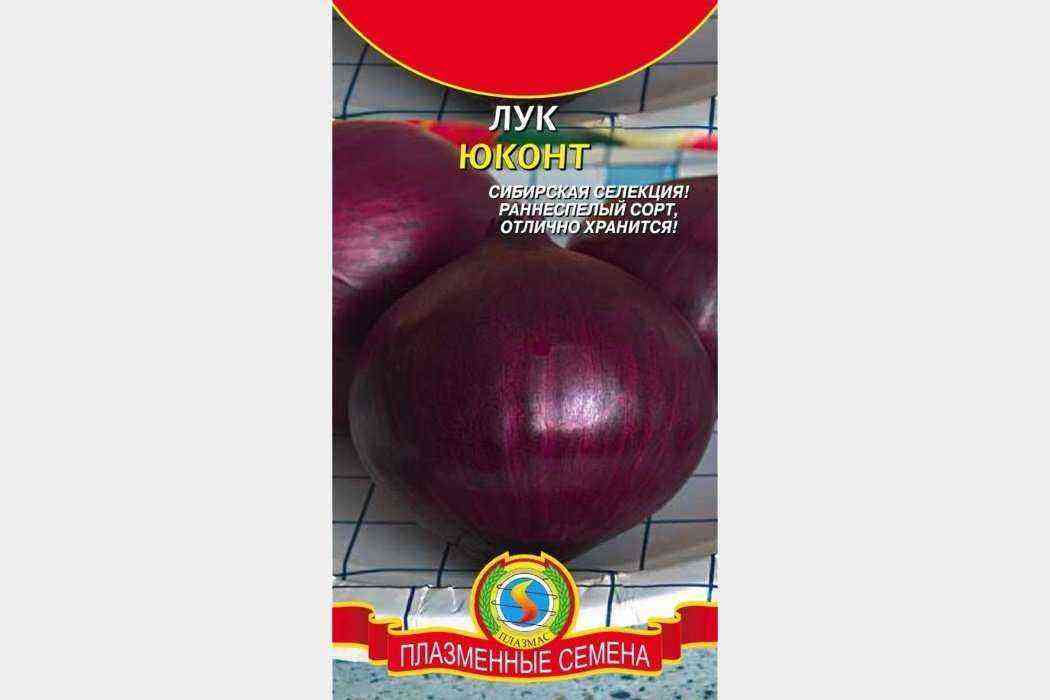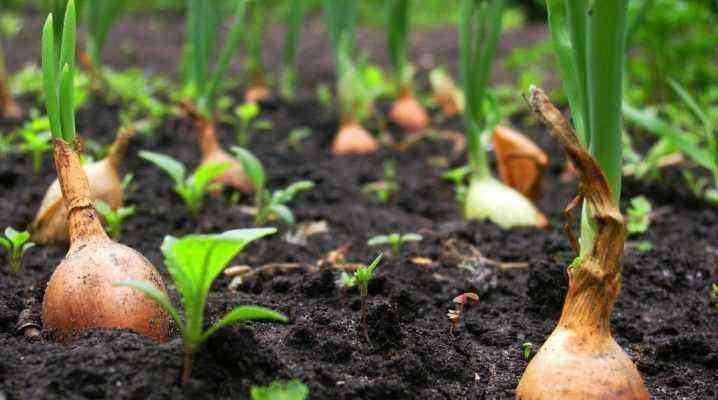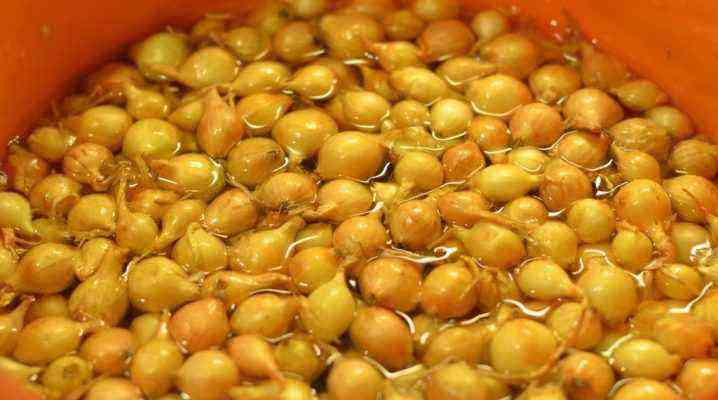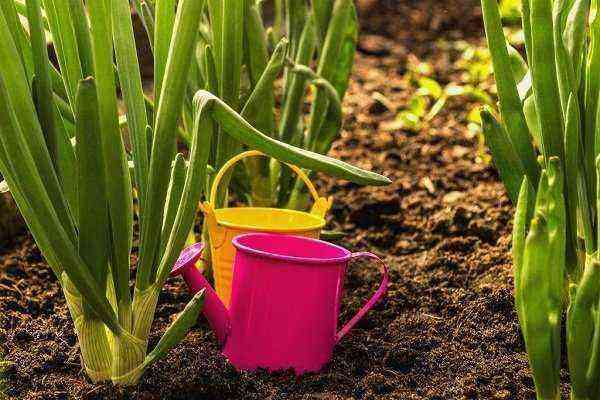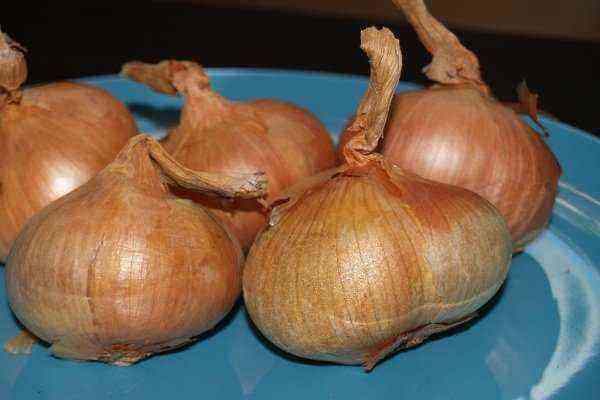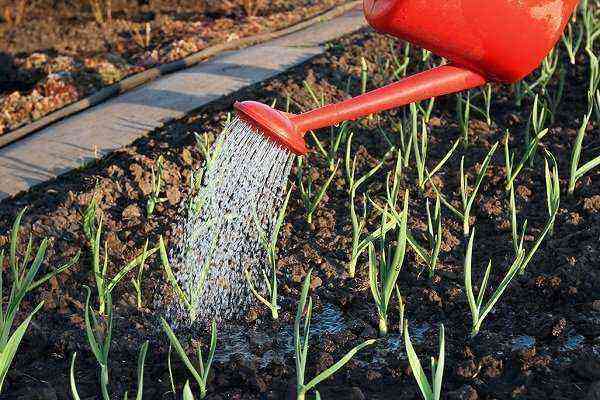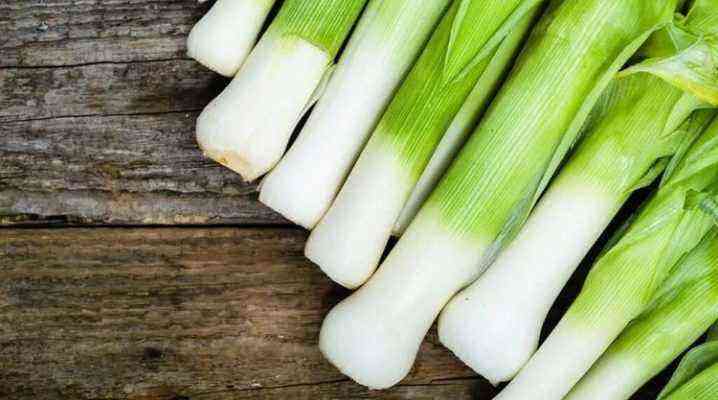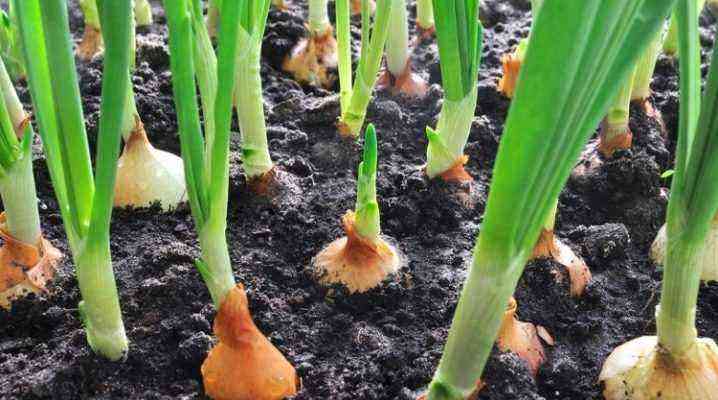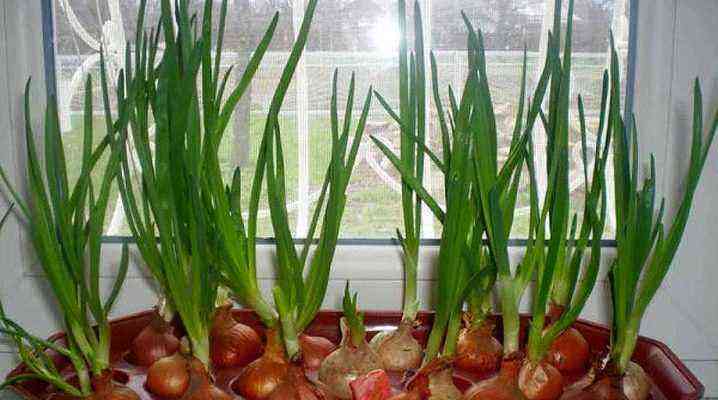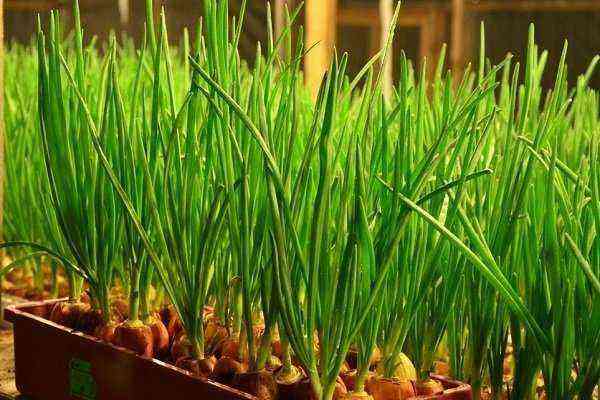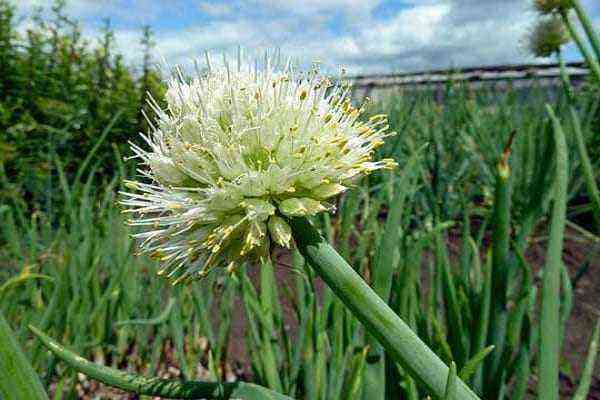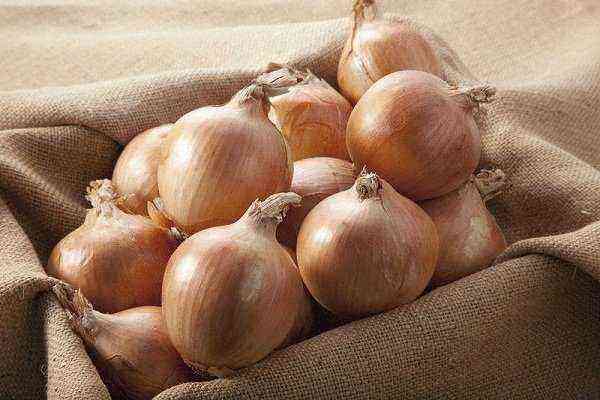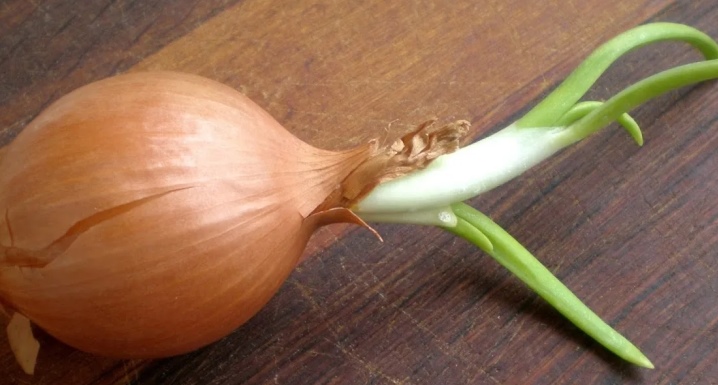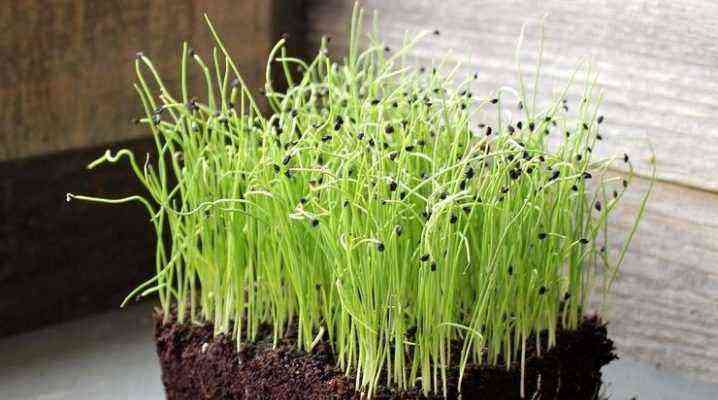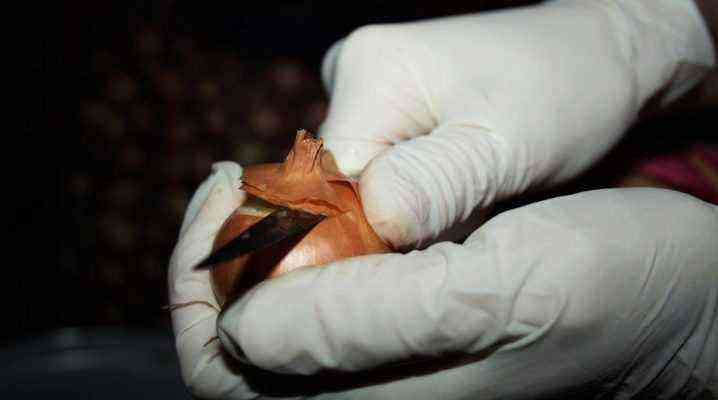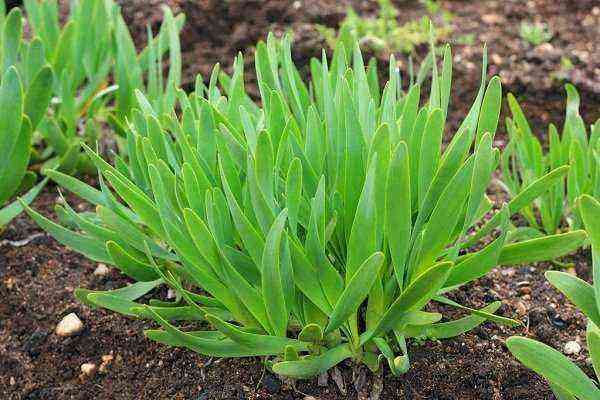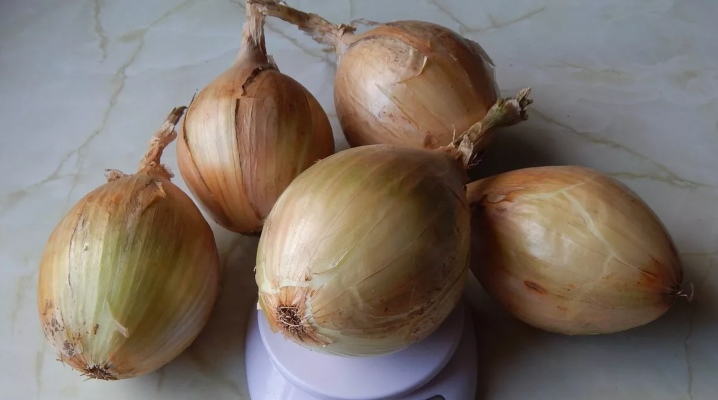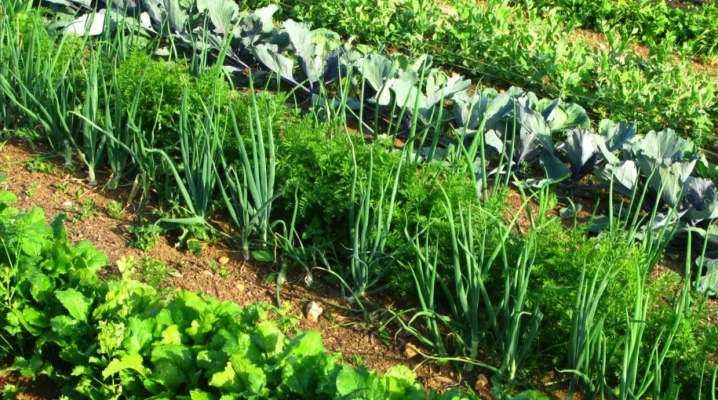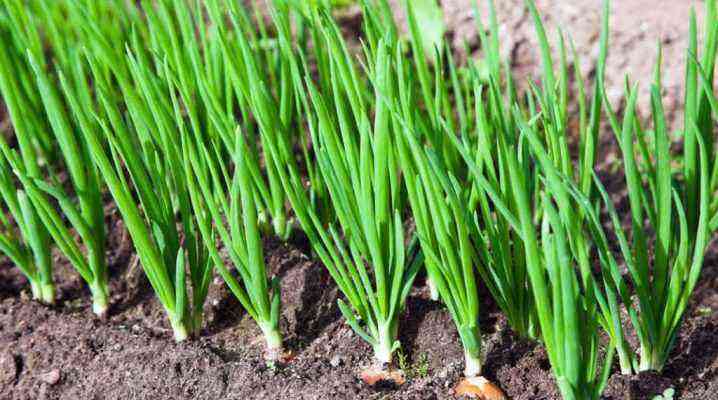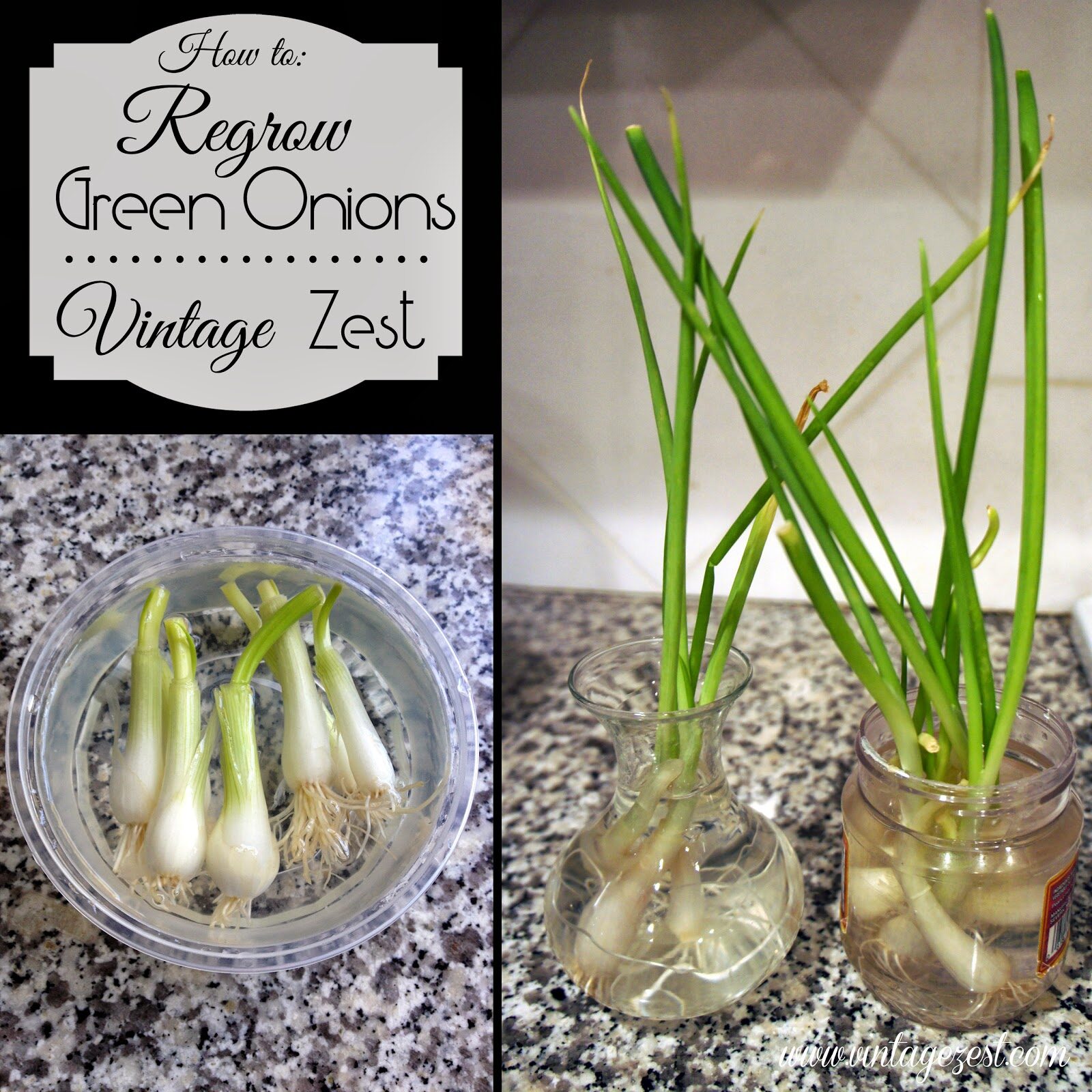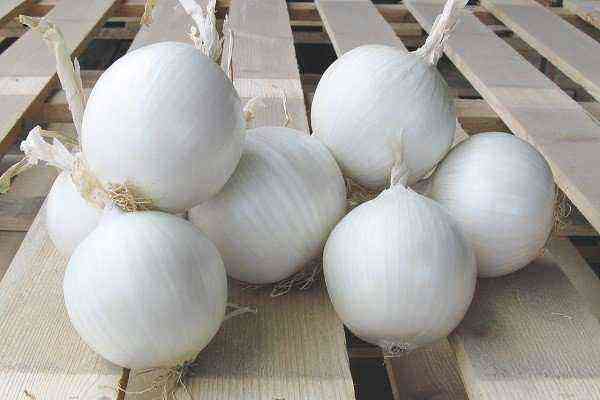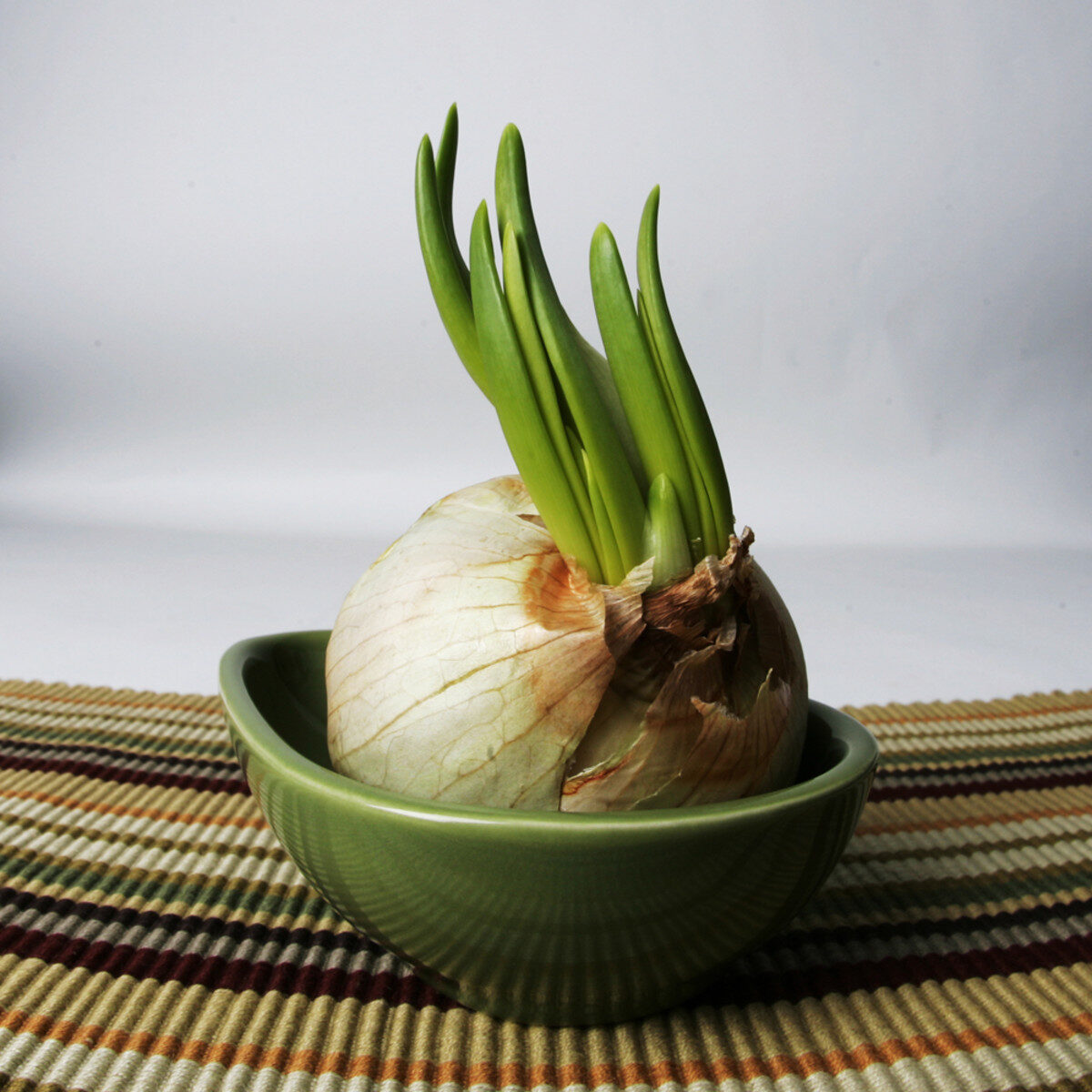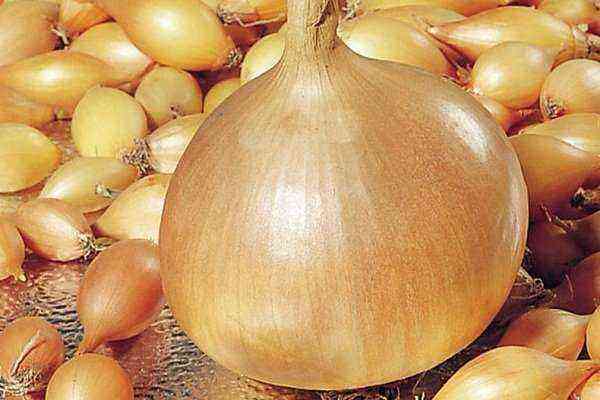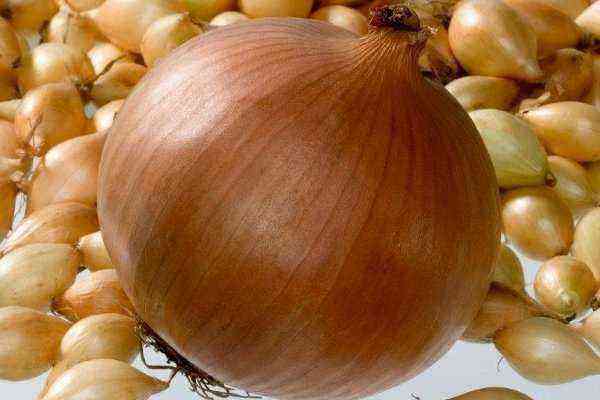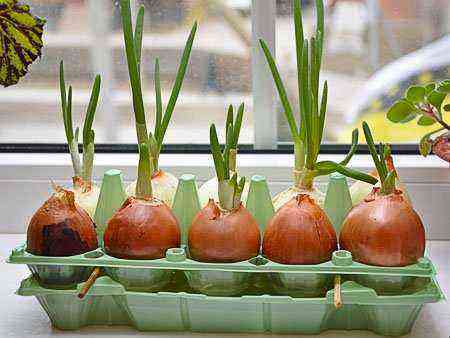Every year more and more gardeners practice planting onions before winter. This technology allows you to harvest fleshy onion feathers already in early spring, and with the advent of summer, plant another annual vegetable crop on the site. How to properly grow winter onions, and what varieties to use for winter planting, we will understand further.
Advantages and disadvantages of planting before winter
Many gardeners are traditionally engaged in sowing in the spring, but relatively recently, in the early 90s, vegetable growers began to cultivate winter onions. This technology offers a number of advantages that also reveal its essence. They are as follows:
- For planting in the fall, you can use the smallest sets. Often, it does not tolerate storage in winter and disappears before sowing – it rots and gives arrows. So, winter planting allows you to save planting material, depriving yourself of the hassle of storing it.
- During the winter season, small bulbs gain enough nutrients to begin to grow actively after the snow melts and the soil warms up, but at the same time they do not have enough strength to give arrows. Thanks to this, in May you can get the first green feathers for salads, and in July or early August – a large turnip.
- Winter varieties ripen about 30 days earlier than onions planted in spring.
- If onions are grown exclusively for greens, they can be harvested early to plant another crop in the same place, with the exception of other varieties of onions and garlic.
- Winter planting does not require watering until about mid-May, because until spring the soil contains enough moisture to feed the planted onions.
- Ripe bulbs are larger in size than when sown in spring. This is due to the fact that when planting in the spring, many gardeners miss favorable periods, which is why the fruits fail to fully ripen.
- Crops planted before winter are more resistant to fungal diseases and bolting. Most often, the plant gives arrows if the bulb absorbs an excessive amount of moisture. They must be removed immediately, otherwise they will draw all the liquid from the fetus. For this reason, the bulbs themselves will not grow to the desired size.
As for the shortcomings of winter onions, gardeners distinguish two points:
- lower yield compared to spring planting, since not all bulbs germinate;
- the worst keeping quality.
Meanwhile, today a large number of winter varieties are presented, which have almost 100% germination. In addition, there are late-ripening varieties, the harvest of which can be stored for at least 8 months. So, if you correctly approach the sowing of onions in the fall, then you can completely smooth out these shortcomings.
Popular winter varieties
If you sow onions before winter, which usually grows in the southern regions, requiring heat and long daylight hours, then in the spring you will be able to harvest only a meager crop. To avoid this, you need to choose early-ripening winter varieties that can tolerate frost and form a turnip with a 12-hour daylight. We will consider these further.
Arzamas local
Onion variety of folk selection, allowed for cultivation almost throughout the country since 1943. Suitable for growing in a two-year culture from sevka. The variety is mid-season – about 68-86 days pass from the mass emergence of shoots to lodging of leaves. From 1 sq. m can be harvested up to 3,2 kg of crop.
Ripe bulbs have the following characteristics:
- average weight – 40-80 g;
- round-cubic shape;
- dry scales are dark yellow with a brown tint;
- juicy white flesh, spicy in taste, which can sometimes be green at the neck.
The variety is frost-resistant, but susceptible to downy mildew (downy mildew) and is affected by the onion fly.
Danilovsky
A variety with an average ripening period: when planting with a set, the growing season lasts 13-14 weeks, and when sowing seeds – 16-17 weeks. A variety was bred in the Danilovsky district of the Yaroslavl region. Grown in many CIS countries. In Russia, it is also suitable for cultivation in the Urals and Siberia, as it is suitable for regions with a short summer.
The variety is small-nested, as 1-2 bulbs appear in one nest. They weigh 80-100 g, but in favorable conditions they can gain up to 160 g. The fruits are formed flat or rounded flat and have juicy pulp of light purple color with a red tint. They are covered with dry scales of dark red color. The taste of the onion is semi-sharp, soft and sweetish.
Unlike the previous variety, Danilovsky is resistant to downy mildew.
Radar
A late onion variety with a high yield – from 1 hectare it will be possible to harvest 25-35 tons of crops. The radar is winter, therefore it has frost resistance. The minus temperature that the plant can withstand depends on the thickness of the snow on the soil. If it is high, then the onion will withstand temperatures down to -23°C, and if thin, down to -15°C.
The bulbs turn out to be large – on average they weigh 150 g, but there are specimens weighing about 300 g. They have a rounded flat shape and are covered with dense light yellow scales, which ensures their long-term storage.
The radar is resistant to various diseases and shooting, and is practically not attacked by pests.
Red Baron
Late red onion. Forms peninsular fruits that have the following characteristics:
- weight from 50 to 130 g;
- round shape, slightly flattened above and below;
- red or dark purple dry scales and flesh of the same color.
To get the largest fruits, the variety should be grown through seedlings. Productivity – 60 g per 1 hectare.
Red Baron is not afraid of transference, root rot and fusarium.
Kip VELF1
A mid-early variety that is gaining more and more popularity among gardeners. From English, its name is translated as “well kept.” Indeed, the hybrid has good keeping quality. It bears fruit with bulbs of a rounded flat shape with dense, high-quality dry scales of a brilliant bronze color. On average, such bulbs weigh from 100 to 150 g.
The hybrid is resistant to bolting, endures cold winters, is immune to many diseases and garden pests, including onion flies and nematodes.
Sense
A variety of early ripening with good yield and good keeping quality (up to 6 months). Fruits in round bulbs, but flat specimens also come across. They have dense yellow-brown scales and white flesh with a sharp taste.
The variety is practically not attacked by insects and is resistant to fungal diseases, including powdery mildew.
Struton
A mid-season variety that differs from other winter crops in a pronounced spicy taste. The fruits are formed in the shape of an ellipse and covered with dry golden-brown scales. On average, they weigh 70-180 g. They can be stored without loss of taste and marketability for 8 months.
Struton is practically not attacked by pests and is not affected by fungal diseases. The plant rarely gives arrows.
Strigunovsky
A variety with early maturity and high yield. With winter cultivation from 1 sq. m plot you can get up to 3,5 kg of bulbs with the following characteristics:
- weight – 45-80 g;
- shape – rounded with a slight run-off from below and above;
- dry scales – dense, yellow with a pink or brown tint;
- the pulp is white and juicy, with a sharp taste.
The germination rate of the variety is high – from 50 to 98%. With proper storage, the crop can lie almost until the next season.
In some years, the culture is heavily attacked by pests and affected by diseases.
Centurion F1
Mid-early hybrid, which has excellent keeping quality (more than 8 months). The fruits are round-elongated, weigh about 110-160 g and are covered with a golden brown husk. The flesh itself is white and juicy, with a sharp taste.
The variety also pleases with good yields. From 1 sq. m beds can collect up to 4 kg of fruit. On an industrial scale, this figure is 300-400 centners per 1 hectare.
Hydrid is resistant to major onion diseases and has no ability to fire arrows.
Shakespeare
Among winter varieties, this is a favorite among gardeners, as it has the greatest frost resistance – unlike Radar, it can tolerate temperature drops to -18 ° C or more, and in the complete absence of snow cover. After snow falls, the plant will not suffer even at lower temperatures.
Shakespeare forms large fruits weighing an average of 100 g. They have a rounded shape, dry brown scales and dense white flesh with a semi-sharp taste.
The variety does not produce arrows, but is weakly resistant to diseases.
Stuttgartenrizen
Early maturing variety of German selection, which forms flat or round-flat fruits with dry yellow and slightly brown scales, although white specimens come across. The flesh itself is always white, with a sharp taste and a record content of vitamin C among all types of onions.
This variety is valued for fruiting with large bulbs – from 100-150 g to 250 g. They have a long shelf life.
Stuttgartenriesen has a significant drawback – it is often affected by downy mildew and somewhat less often by neck rot.
Ellan
Early ripe winter variety, which is characterized by good germination and excellent taste. Round bulbs with dry straw-colored scales weigh 100-150 g and have white flesh with a sweet taste. Ellan can be eaten already in June, when spring onions and garlic continue to grow, and last year’s harvest is over.
The variety is resistant to peronosporosis and endures cold.
An overview of the best winter varieties from Holland is given in the video below:
Terms of planting
To get an early harvest of onions, it is extremely important not to miscalculate the timing of its winter planting. This factor depends on specific weather conditions, so it is necessary to determine favorable days for sowing on an individual basis. In this case, you need to proceed from the following rules:
- planting work must be done before the arrival of this winter, that is, before frost;
- from the time of planting to the onset of frost, 3-4 weeks should pass so that the plant has time to fully take root in the soil (weather conditions change every year, so you should follow the forecasts);
- the best time for planting is to establish a stable temperature within + 4 … + 6 ° C (before this time, you should not start planting, otherwise the number of arrows in the spring will increase significantly).
In view of the foregoing, it becomes clear that planting dates will vary in different regions. For example, in central Russia, including in the Moscow region, the optimal period falls on October – early November. However, some varieties should be applied to the ground before the end of August – from the 15th to the 25th. These plants have a long growing season, which allows them to take root thoroughly in cold weather. The main thing is that before frost the seedlings have time to acquire 4-5 leaves and a neck with a diameter of 5 ml.
With the determination of favorable days for planting a winter crop, the Lunar calendar will also help, according to which onions should not be planted on a full moon.
How to grow sevok for winter planting?
Experienced gardeners prefer to independently grow sevka from seeds (chernushki) of frost-resistant onions bought in a specialized store. Conventionally, this procedure can be divided into several stages:
- Determination of sowing dates. In early spring, immediately after the snow melts and the soil warms up, start sowing blackberries. As a rule, favorable dates fall around the end of March or the beginning of April.
- Sowing. Seeds can be sown densely in strips with a step of up to 5-6 cm to a depth of 1,5-2 cm. Their approximate consumption is 35-40 pieces per 1 sq. m. The aisle should be wide so that in the future it will be easy to carry out weeding. To do this, you can leave 35-40 cm between the strips.
After sowing, nigella should be covered with sifted soil with a layer of up to 2 cm. It should be lightly rolled to prevent wind erosion of the soil. At the end, it remains to mulch the crops with humus, compost or straw. - Sowing care. After the appearance of the first shoots, the bed should be watered for the first time. In the future, this procedure is carried out only as a crust appears on the surface of the soil. After heavy rain, the ground should be slightly loosened to provide air access to the roots of plants. At the same time, weeds should be removed. The bed can also be fed, but only before the sowing rises.
Planting should not be strongly fed, otherwise the bulbs may lose all seed properties.
- Collection of sevka. Onion sets are often suitable for harvesting in late July – early August. By this time, their leaves turn yellow, dry and lie down. All sevok should be immediately dug up and left in the garden to dry. When the bulbs are dry, their leaves can be easily and quickly peeled off with your hands.
- Sorting bulbs. Collected heads need to be selected and sorted. In one direction, you need to lay out large specimens (with a diameter of more than 1 cm), and in the other – small ones (with a diameter of up to 1 cm). All damaged bulbs will need to be destroyed.
For autumn planting, you need to use sets less than 1 cm in size. Larger rhizomes can be planted in the ground in the spring.
Site selection and soil preparation
Sevoc must be planted in the right place, otherwise you will have to forget about a large crop of large bulbs. The site must be selected taking into account several parameters at once:
- Illumination. Landing should be placed in a place well warmed by the sun’s rays. It must also be reliably protected from winds and drafts.
- Passage of inland waters. Wet soil, especially in winter, will cause plantings to rot and die. To avoid this, for sowing onions, it is best to choose that part of the garden that does not flood in the spring or is located immediately on a hill. With a close location to the groundwater area, it is imperative to make drainage for its flow.
- soil. The best for planting onions are areas with humus-sandy soil or with a predominance of humus loam.
- Worst predecessors. Onions cannot be planted in the same place for more than 2 seasons in a row. The culture can be returned to its original site only after an accident of 4-5 years. It is also undesirable to grow onions after oats. If this rule is violated, then the soil will become infected with pathogens that can survive frosts and destroy the entire crop. To protect the planting from the nematode, onions should also not be planted after:
- potatoes;
- parsley;
- celery
- alfalfa;
- clover.
- The best predecessors. It is desirable that the following crops grow in the marked area:
- cereals (all except oats);
- legumes (peas, beans);
- cereals (rye, corn);
- various types of lettuce and cabbage;
- beet;
- carrot;
- tomatoes;
- cucumbers
- rape.
To improve the structure of the soil and increase its fertility, green manure should be planted in front of the onion, mowed about 30 days before planting the seed and planted in the ground.
The selected site must be prepared in advance – from the summer (about a month before the winter planting). It needs to be dug up and humus added. If it was introduced under the predecessors, then this step can be skipped, because by the time the onion was planted, it had already enriched the soil and acquired the same structure as it. In no case should fresh manure be introduced for planting seedlings, otherwise the bulbs will turn out to be loose, and the green mass will significantly prevail over them.
Together with humus, the soil can be fed with the following fertilizers (per 1 sq. M):
- 20-25 g superphosphate;
- 10-15 g of potassium salt;
- 30 g Ammofoski.
Immediately before planting, the soil should be watered and left for a couple of hours to dry out. Next, it needs to be slightly loosened, weeded and leveled. When planting in the holes, you can also add a pinch of wood ash.
Planting sevka
Sorted onion sets can be planted in the prepared soil. The specific planting scheme depends on the purpose of growing the crop.
On the tail
On the day of planting in the garden, you need to prepare the grooves, adhering to the following scheme:
- row spacing – from 12 to 15 cm (depending on the diameter of the bulbs: the larger it is, the farther apart the rows should be placed);
- the distance between small bulbs in a row is from 5-6 to 10 cm (should be such that the feeding area is sufficient);
- sowing depth – 4-5 cm (if seedlings are planted to a shallower depth, then in spring the bulbs will bulge out of the ground and suffer from cold weather).
The necks of the bulbs during winter planting cannot be cut off.
Dried bulbs should be thrown into the prepared rows, and then covered with light earth – a garden mixture with humus or sand. Ready planting should be mulched before the expected cold weather. As a mulch, you can use the following material:
- dry leaves or humus;
- straw;
- shredded tops of legumes;
- fallen needles;
- flower stems;
- sawdust;
- pine needles;
- small branches (after pruning apple trees, raspberries).
On frosty days, planting can be covered with white agrofibre. It will help the onion survive winters with little snow, with temperatures dropping to -20°C.
On the green
If onions are grown on greens, then a slightly different technology is used. First of all, you can use a larger set – one that is suitable for spring planting. The landing scheme also needs to be changed:
- width between rows – from 15 to 20 cm;
- the distance between sets in a row is from 9 to 12 cm;
- sowing depth – 4-6 cm.
Landing must be insulated with a layer of mulch from dry leaves or fallen needles. If this is not done, then all the seed material will freeze and will not be able to sprout in the spring.
Winter onion care
In order to competently complete the cultivation of winter onions, during the growing season, it is necessary to organize competent care for it. It consists in carrying out a number of agrotechnical measures and protecting the planting from diseases and pests.
Agrotechnical events
As the plant develops, it is necessary to carry out such manipulations in a timely manner:
- Watering. Water the beds sparingly as they dry out. Planting should not be flooded, otherwise moisture stagnation will lead to rotting of the bulbs. If the autumn turned out to be dry, and precipitation did not fall for a long time (about 20 days), the onion should be watered several times.
- Loosening. When the first shoots appear on the 18-20th day, loosen the ground for the first time. In the future, this manipulation should be done regularly – after snow melts, heavy rains or watering.
In soft soil, the bulbs will quickly gain weight and grow large, and in hard soil they will remain small, resembling garlic in size. You need to loosen the earth carefully so as not to damage or infect the bulbs. - Weeding. Weeds should not be allowed to grow in the garden, as they can drown out the tender young shoots of onions. So, as you loosen the bed, you also need to weed.
- Hilling. So that the bulbs do not freeze and remain under the ground, before the onset of winter, spud the bushes by 5-7 cm.
- Additional fertilizing. It is carried out only in case of severe depletion of the soil. If fertilizers were applied, then top dressing is not needed. In this case, the rule applies: it is better to underfeed than to overfertilize.
The fact is that an excess of fertilizer will lead to an active increase in green mass, but the bulbs will form small and loose, unsuitable for long-term storage. They will have to be immediately dug up, eaten or thrown away. If the soil is depleted, then you can feed it 2-3 times according to the following scheme:- in the spring, after warming up the soil and the appearance of the first shoots, carefully loosen the bed and pour it with a solution of mullein or diluted chicken manure (these are nitrogen supplements that will accelerate the growth of onions);
- with the appearance of the first green leaves – feed the onion with immunomodulators or growth stimulants, for example, Plantafol solution (use drugs strictly according to the instructions on the package);
- in summer, in June or July (at the stage of bulb formation) – water the beds with a solution of wood ash (this is not only a good fertilizer, but also an effective pest repellent).
It is impossible to feed winter onions in autumn, because in this case the bulbs can immediately grow and will no longer be able to survive the winter. The maximum that can be done during this period is to add a little ash and humus to the garden. This will increase the fertility of the soil, but will not lead to accelerated ripening of the bulbs.
- Mulch cleaning. In early spring, immediately after the snow melts, remove a layer of mulch from the garden bed. So that the landings do not freeze, they can be covered with a white non-woven fabric at night.
Protection against diseases and pests
To protect planting from diseases and pests, you need to follow the rules of crop rotation. In addition, you should adhere to the following preventive measures:
- plant carrots, calendula or marigolds between rows;
- twice, with an interval of 8-10 days (at the end of June and mid-July), scatter a mixture of tobacco dust, mustard and ash between the rows.
However, even with such measures for onion planting, the danger may be:
- Lukovaâ flies. Appears in the garden in mid-May, lays eggs on the onion and the soil next to it. During the summer, at least 2 generations of the pest can attack plantings. Their larvae crawl into the bulbs and cause them to rot. In the fight against the fly, it is necessary to treat the planting with organophosphorus agents (imide, thiacloprid) or add granular preparations (Bazudin, Phosphamide) to the soil.
- Downy Mildew. It affects the onion bed in the fall. After infection, the plants lag behind in growth, dry out in dry weather, and become covered with a gray-violet bloom in wet weather.
For the purpose of prevention, once every 12-14 days, onions must be treated with contact fungicides (copper oxychloride, Oxychoma). In cloudy weather, this interval should be reduced to 7-8 days. If the plant is still sick, it will have to be treated with systemic fungicides (Acrobat MC, Ridomil MC). It is advisable to alternate them with each other.
When growing onions on a feather, it is impossible to treat the planting with pesticides.
Harvesting and storage of crops
As soon as the bulbs reach ripeness, they need to be removed from the garden. This will be indicated by the following signs:
- dry turnip scales have acquired a color characteristic of a particular variety, for example, orange, purple or red;
- the leaves fell.
Some gardeners deliberately lay the leaves on the ground to speed up the ripening of the bulbs. However, it is better to wait until the natural ripening process is completed, otherwise the quality characteristics of the fruit may suffer.
When harvesting, ripe bulbs should be carefully dug up with a pitchfork or shovel, shaken off the ground and dried in the open air. For storage, it is better to lay onions with completely dry leaves and roots. Immature specimens and bulbs with a juicy thick neck should be eaten immediately, as they do not store well.
The secrets of growing winter onions will be revealed by an experienced gardener in the following video:
Winter onion varieties with high cold resistance are presented today in a large assortment. They can be planted before winter in order to get an early harvest of bulbs from the end of June to the beginning of August. Such varieties are unpretentious and require only the timely implementation of basic agricultural practices.
